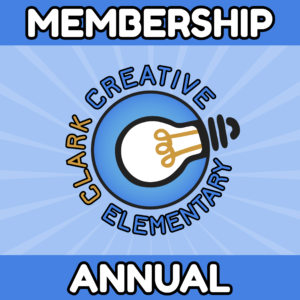Person Puzzles are quick skill practice assignments that integrate biographies of humanitarians and inspirational people. As students solve math problems, they learn facts about the person’s life. Assignments are available for grades 3 through 12 and have proven to a relied on engaging practice task.
Why does math practice need to be routine and repetitive? Why can’t there be some reading across curriculum? Why not a little social studies?
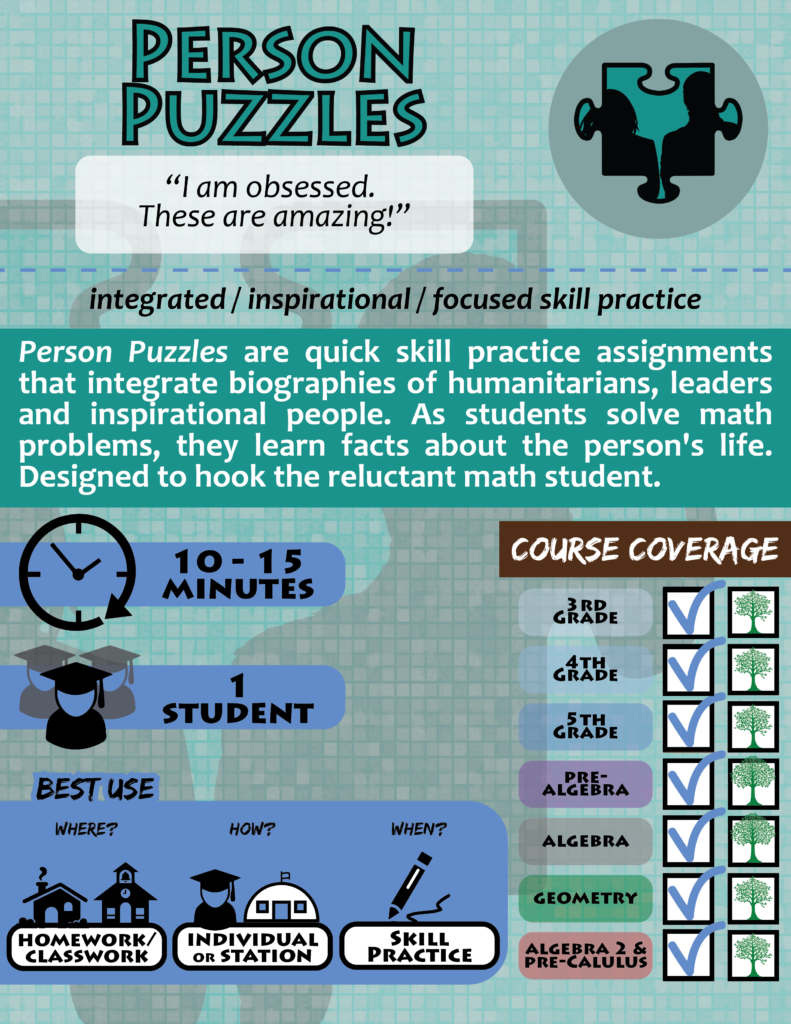
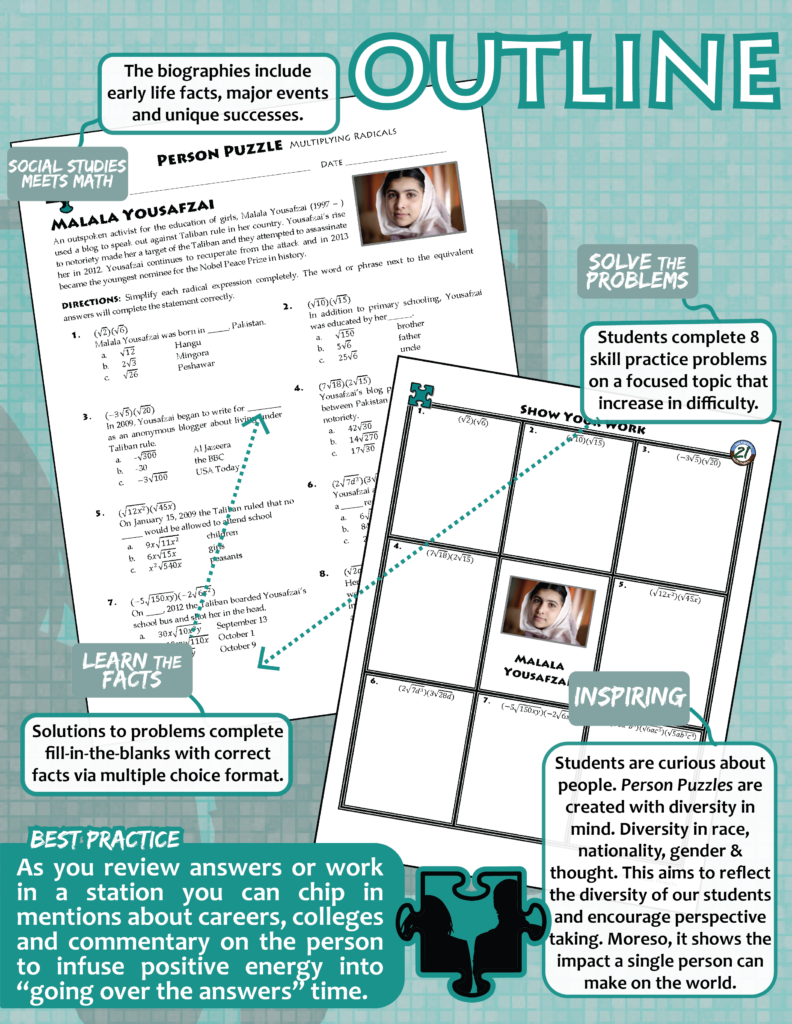
Person Puzzles are quick, 8-question math skill-building worksheets that can be completed in 10-20 minutes. In each puzzle, students uncover the clues to reveal biographical information about historical figures.
Why did you start writing them?
There was a moment in class where I realized my high schoolers didn’t have any idea who Nelson Mandela was. As I shared my disbelief with my neighbor teacher —
— I realized they didn’t know who Nelson Mandela was either.
I considered places in the school curriculum where students may have learned about him. And honestly, I came up pretty empty. He isn’t much of a historical figure, at least the type of history students learn today. He isn’t American, where the majority of our history content is studied. So unless an ELA teacher brought in some passages or a SS teacher did an Apartheid unit, he easily slips through the cracks.
Later, I took a job as a founding teacher at an International school. We had students and teachers from all around the world. I realized the Person Puzzle wasn’t just great for sharing some biographical information but also allowed students from diverse backgrounds to learn about people who were like them and… equally importantly, unlike them.
While I’ve written Person Puzzles for 5 years, today, I’m convinced they are more important than ever for two reasons: 1) To Familiarize themselves with people from diverse backgrounds (despite in some cases being from non-diverse communities) 2) To see what empowered, inspirational people can achieve. I think our young people need this more than ever.
How do you pick these people?
I strive for a lot of balance in the spectrum of the people I choose to make puzzles for. Largely, they fall into two categories: inspirational people and humanitarians. Many are both. I like to inter-mix seemingly ordinary people who have done ordinary things alongside Nobel Prize winners. Entrepreneurs next to Civil Rights activists.
Why would I use it?
Ultimately, I find that students always have an increased engagement with a Person Puzzle. They are generally curious about people. They like a little mystery. They like puzzles. And surprise! They may not like learning about polynomials, but they do like learning about people.
Person Puzzles can be found a la cart at TpT (http://tiny.cc/PersonPuzzles) is included in the following unlimited subscriptions:
-
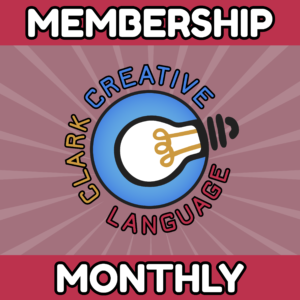 Clark Creative Language Membership (Monthly)$10.00 / month
Clark Creative Language Membership (Monthly)$10.00 / month -
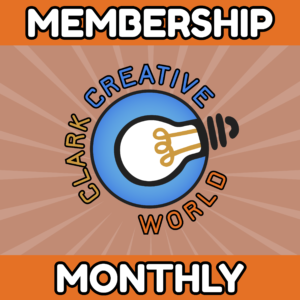 Clark Creative World Membership (Monthly)$12.00 / month
Clark Creative World Membership (Monthly)$12.00 / month -
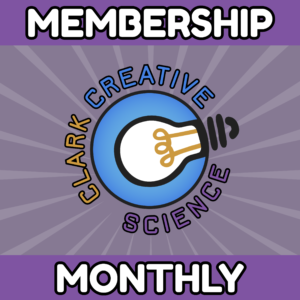 Clark Creative Science Membership (Monthly)$12.00 / month
Clark Creative Science Membership (Monthly)$12.00 / month -
 Clark Creative Math Membership (Monthly)$15.00 / month
Clark Creative Math Membership (Monthly)$15.00 / month -
 Clark Creative Science Membership (Annual)$120.00 / year
Clark Creative Science Membership (Annual)$120.00 / year -
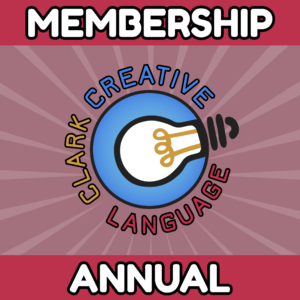 Clark Creative Language Membership (Annual)$100.00 / year
Clark Creative Language Membership (Annual)$100.00 / year -
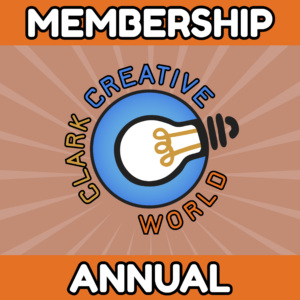 Clark Creative World Membership (Annual)$120.00 / year
Clark Creative World Membership (Annual)$120.00 / year -
 Clark Creative Math Membership (Annual)$150.00 / year
Clark Creative Math Membership (Annual)$150.00 / year
or receive unlimited site access with —
-
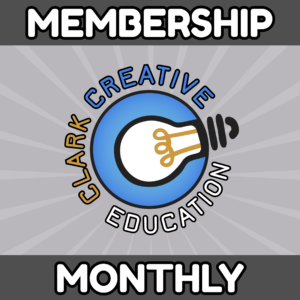 Unlimited Access Membership (Monthly)$20.00 / month
Unlimited Access Membership (Monthly)$20.00 / month -
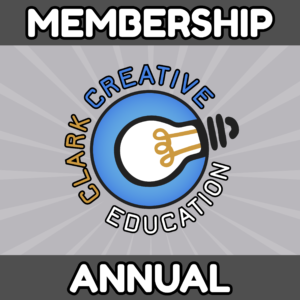 Unlimited Access Membership (Annual)$200.00 / year
Unlimited Access Membership (Annual)$200.00 / year
